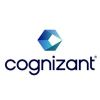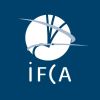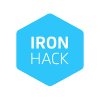Curriculum Vitae
- Sections: EXPERIENCE - EDUCATION - SKILLS, CERTIFICATIONS AND COURSES
About me
With a strong scientific background and extensive experience as a Data Scientist, I thrive in the dynamic environment of data science. Having contributed to cross-functional projects and internal initiatives focused on ML pipelines, I excel in teamwork, meeting deadlines, and effectively communicating complex ideas to non-technical audiences. As a curious and fast learner, I continuously embrace the latest data science techniques, ensuring adaptability and delivering tangible results.
Experience
SDG Group
Senior Consultant (Sep 2021 – Present)
Data Science Senior Consultant at SDG Group Spain.
Cognizant Technology Solutions Corp.
Associate Data Scientist (May 2021 – Aug 2024)
Participation in projects involving Life Sciences, Insurance, Food quality control and Oil & gas companies. Some examples of my work are listed below.
- General Data Science experience:
- Coded a Generative AI chatbot for allowing the user to obtain automatic descriptive analytics and generate plots to help in logistics planning. The chatbot is connected with a graph database with supply chain logistics data.
- Developed an RAG-based chatbot for internal data used in production at a banking company. Improved its performance, resulting in a decision to increase the user base from 50 to 600 employees
- Designed a NLP use case for record matching using NLP techniques (sentence similarity, Fuzzy string matching).
- Worked on optimization use cases to obtain the most adequate actions to use in the supply chain.
- Statistical and scientific experience:
- Analyze survey multi dimensional data to make arguments based in data using Causal Inference techniques, Propensity Score Weighting or Bootstrapping.
- Updated an AI model to assist clinical study designers in planning procedure schedules, implementing feedback requests from the users, product owner and experts.
- Developer tasks:
- Developing MySQL DB connections in python.
- Handled CSV, XML (Jinja templates) to create reports and configuration files.
- Tested the business process and creating automatic logs and Unittests to ensure stability and maintainability.
- Computer vision projects:
- Built different Neural Networks and ML solutions to detect defects in objects of interest (using autoencoders or clustering, among other approaches).
- Collaborated with team members to create API endpoints to put the solution in production.
- Created Azure Percept Computer Vison models (IoT device in preview phase) applied to object recognition use cases for an internal project.
- Deployment experience:
- Deployed AI demos in an Azure web app using Docker/Streamlit or Flask API.
- Collaborated with testing team to create API endpoints to productionize solutions.
- Designed a CI/CD in GitHub to connect input data from S3 buckets and automatically deploy Flask APIs in Docker containers pushed to ECR in AWS.
- Mentoring:
- Taught data science and computer vision concepts and applications to graduates.
Institute of Physics of Cantabria (CSIC-UC)
Researcher (January 2014 – December 2019)
Analyzed data for the PhD Thesis research using information the Bright Ultra-hard XMM-Newton Survey (BUXS) to study the relation between the UV/optical extinction, X-ray absorption and classification of Active Galactic Nuclei.
- Analyzed datasets of 258 Active Galactic Nuclei (AGN) using proprietary observations and public spectra.
- Created Python code and adapted others to detect emission lines or to measure best fitting models for big spectral datasets.
- Planned numerical simulations to measure the nuclear obscuration of AGN and its emission properties.
- Prepared and presented 10 talks and posters presenting results in conferences.
- Coordinated outreach activities that include public astronomical observations, outdoor outreach activities, talks at schools and public visits to the IFCA installations.
- Teacher of astronomy practices for studies of the Physics Degree in the Universidad de Cantabria (35 hours in total taught in Spanish and English).
Click here to read a more in depth page related to my work in astrophysics. The research contributions (refereed and non-refereed) available in ADS.
Education
Ironhack
Data Analytics bootcamp (October 2020 – December 2020)
- Advanced Python (using Numpy, Pandas and others): Functional programming, Lambda, Map, Reduce, Filter, Error Handling, OOP.
- Relational and Non-Relational databases: MySQL, MongoDB.
- Essential Technical & Data Analysis Skills: Bash, Git, GitHub, Jupyter Notebook, Spyder.
- Exploratory and Storytelling Data visualization (Matplotlib, Seaborn, Tableau).
- Inference statistics with Python (Hypothesis testing, Bayesian statistics, PCA,..) and analysis techniques applied to real world problems.
- Supervised and Unsupervised Machine Learning using scikit-learn (Feature extraction, model evaluation, engineering, pipelines,…).
- Neural Networks in Python using TensorFlow and Keras.
- APIs (Flask), Web Scraping (BeautifulSoup), Regular Expressions, Natural Language Processing.
University of Cantabria
Doctor in Science and Technology with a distinction “cum laude” (January 2014 – December 2019)
I studied the relation between the UV/optical extinction (AV) and the X-ray absorption (NH) in type-1 AGN using the Bright Ultra-hard XMM-Newton Survey (BUXS). We have conducted two different studies. In the first one we have two type-1.9 AGN (high AV) with low NH so we study this discordance. In the second one, we have conducted a statistical study of a representative study of 132 type-1 AGN. We analysed the optical and X-ray spectra to obtain AV and NH, the intrinsic luminosity and fluxes and widths of the emission lines.
In the first study we obtained that low absorbed type-1 AGN do not form a physical family of objects, as the discordance in each object is caused by different factors.
In the second one we obtained that AV and NH are related with the optical subclassification and that for type-1 AGN, extinction and absorption are not correlated.
Thesis supervisors: Silvia Mateos, Francisco J. Carrera
Link to the abstact in UCrea and to the Thesis PDF
University of La Laguna
Master’s Degree in Astrophysics (September 2012 - July 2013)
Specialization in “Computation and Theory” and “Technology and Instrumentation”
My first contact with Machine Learning was during my Master Thesis work. It consisted in a modification of the K-means unsupervised clustering algorithm, that we modified updating the cluster centroids “on the fly” (single-pass k-means, Ordovás-Pascual & Sánchez Almeida 2014). Tested in a subsample of 20000 galaxy spectra, we reached a decrease of the computation time (between 20-40%) with respect to the K-means traditional approach, obtaining equivalent classifications.
Bachelor’s Degree in Physics (September 2005 - September 2012)
I conducted the first part of my Physics degree in the Universidad Complutense de Madrid. I moved to the Canary Islands and I finished my degree in the Universidad de La Laguna with a specialization in astrophysics.
Skills, Certifications and Courses
Data Science and Python programming skills
- Advanced Python Programming
- Data Science and Python developer libraries (e.g. Numpy, Pandas, Matplotlib/Seaborn, unittest, logging)
- Computer Vision (OpenCV, Azure Custom Vision)
- Supervised/Unsupervised Machine Learning & Deep Learning (Scikit-learn, TensorFlow, Keras)
- Natural Language Processing
- Database handling (MySQL, MongoDB)
- Azure Cloud tools (Fundamentals, Machine Learning Studio, Percept)
- Data Engineering tools (Git, GitHub, API)
- Other: Web Scraping, Regular Expressions, Bash, LaTeX, IDL
Official certifications
- Microsoft Certified: Azure Fundamentals (AZ-900), 10 September 2021.
Training courses
- Azure Percept Bootcamp, organized by Microsoft to learn how to deploy Computer Vision and AI models in this IoT device.
- Hands on Natural Language Processing with Python, Udemy MOOC.
- Python for Computer Vision with OpenCV and Deep Learning, Udemy MOOC.
- Microsoft Azure (DP-100, AZ-900, AI-900, DP-900), Udemy MOOC.
- Business Etiquette 101: Social Skills, Udemy MOOC.
- Specialization: Machine learning, Coursera MOOC.
- Introduction to TensorFlow for Artificial Intelligence, Machine Learning, and Deep Learning, Coursera MOOC.
- Narrate the Science: Scenic and oral narration techniques for scientific communication, UC summer course.
- AWS Cloud Practitioner Essentials, AWS Cloud Technical Essentials and AWS Fundamentals: Addressing Security Risk, Coursera MOOC.
- NEON Observing School 2015, Asiago Observatory (Italy).






